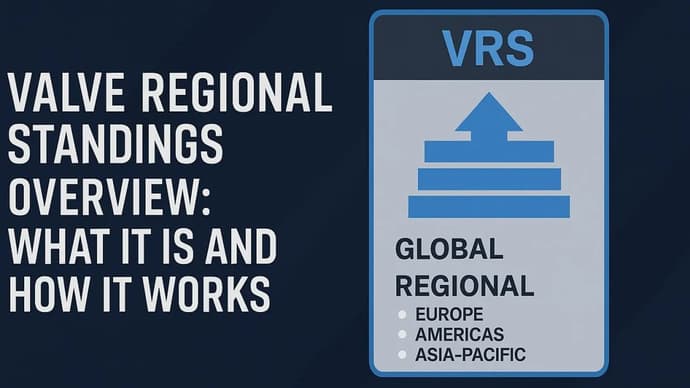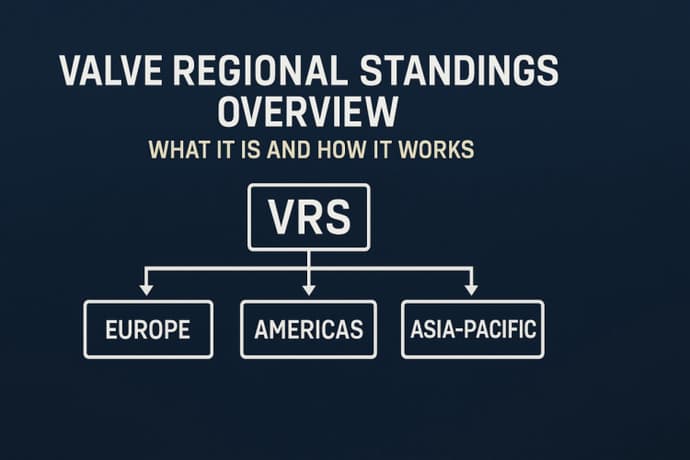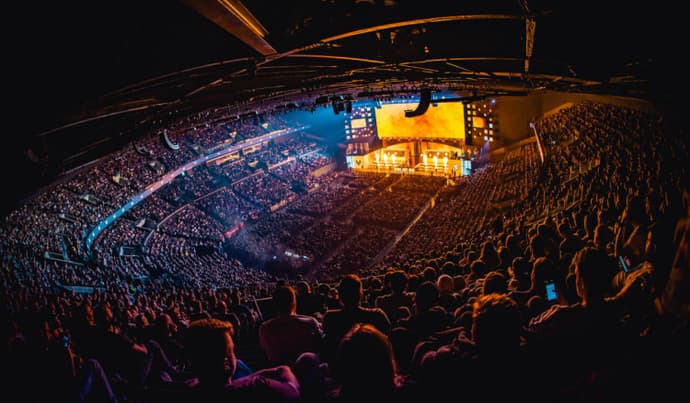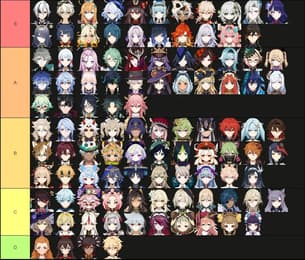
Valve Regional Standings (VRS) Overview: What it is and how it works

CS2 Major is the biggest and most anticipated tournament of the year, and every team dreams of participating in it. Invitations are distributed through Valve Regional Standings (VRS) — Valve's official ranking system, which includes one global and three regional lists (Europe, America, Asia-Pacific).
This ranking determines who will receive direct invitations and how the bracket will be formed on the way to the championship. In this article, we have compiled all the information you need to know about VRS.
What is VRS

The Valve Regional Standings (VRS) system was officially introduced by Valve in October 2023, when the company announced a new format for qualifying for Majors in CS2. It was first used on the road to the PGL Copenhagen Major 2024 (the first Major in CS2). At that time, Valve abandoned the previous RMR (Regional Major Rankings) system as the main criterion and made VRS the key ranking for:
- invitations to Major Regional Qualifiers (MRQ),
- determining region quotas,
- seedings for teams at the Major itself.
How the rating is formed (according to Valve's model):
- the team's prize money is taken into account;
- the strength of the defeated opponents (their prize money and the number of teams they have beaten);
- face-to-face meetings: Valve directly describes these factors in its repository with the model.
Additional technical details (as implemented in public ranking tables): a “window” of the last ~6 months of results is taken, with significant weight given to major events; tables are updated weekly.
How VRS affects invitations to the Major
The CS2 Major invite and seed system combines Valve Regional Standings and MRQ qualifiers to create a fair and transparent selection of the world's strongest teams. Major Regional Qualifiers (MRQ) are qualifying tournaments held in each region (Europe, America, Asia-Pacific) to determine which teams will make it to the Major. These MRQs are organized by tournament operators such as BLAST or StarLadder.
For BLAST.tv Austin Major 2025, the invite and seeding system worked in full. Teams received invitations to the Major Regional Qualifiers based on their positions in the Valve Regional Standings, after which 16 spots for the Major were played out in three regions. Europe and the Americas received six slots each (for the Americas — three for North and three for South), and Asia received four, two of which were determined by the Chinese MRQ. All 75 matches of this qualifying stage were held online. Then, after the qualifiers were over, the teams were seeded in the starting stage of the Major solely based on Valve's global rankings, which determined the starting pairs and potential trajectories of the participants in the tournament bracket.
In fact, this model has been in place since the very beginning of the CS2 era: at the first Major — PGL Major Copenhagen 2024 — invitations were also distributed through VRS, and all spots were determined at regional MRQs without any partner slots or wildcards. For the StarLadder Budapest Major 2025, the quotas were increased: Europe received 16 spots, America — 10, and Asia — 6.
Thus, the invite and seeding system ensures transparency and a level playing field for all regions. Success in the MRQ paves the way to the Major, and Valve's global ranking determines how difficult the path will be in the starting stage.
VRS Changes Timeline: What has changed since its introduction
To avoid abuse by teams trying to participate in tournaments in other regions with less competition, Valve has introduced a number of changes to the VRS system. Now, each team has a clear regional affiliation and must comply with the updated roster requirements for events that count towards the ranking. In particular, a new player must play at least five official matches as part of the roster for the team to be admitted to the Major.
- One regional affiliation per team (June 2025). Teams are no longer displayed in multiple regions at once — each is “attached” to only one VRS list. This affects the invitation queue in a particular region.
- Roster requirements and “related events” (August 2025). Valve has added new rules for teams participating in VRS-counting events (to avoid manipulation for transfers and “spot” performances). This directly affects whether a team will receive points/results, and therefore its chances of receiving an invite.
These innovations are intended to make the selection system more fair and protect it from manipulation. Clear rules for teams and regional affiliation ensure that teams earn their spots at the Major solely through fair play and consistent performance.
Major Invitation System

Invitations to the CS2 Major are distributed according to the Valve Regional Standings system. First, a ranking is formed in each region (Europe, America, Asia-Pacific), and teams receive invitations to the Major Regional Qualifiers (MRQ) based on their positions in this ranking. Each MRQ has a limited number of slots for the Major, so only those teams that are higher in the VRS get a chance to compete for a place in the tournament. The winners of the MRQ advance to Stage 1 of the Major, and the final seeding after the qualifiers is determined by the global VRS ranking, which determines the starting matches and the teams' path in the championship bracket.
For teams, this system means a busy schedule of tournament appearances, often with only a few days' break between them. Sometimes teams have to choose between one tournament or another, selecting the one with the potentially best result based on the composition of the participating teams.
 How to Unlock All Weapons in Megabonk: Complete TableThis Megabonk all weapons guide shows you how to unlock all 29 weapons, what conditions each requires, and tips to get them faster in your runs. Bookmark for reference.
How to Unlock All Weapons in Megabonk: Complete TableThis Megabonk all weapons guide shows you how to unlock all 29 weapons, what conditions each requires, and tips to get them faster in your runs. Bookmark for reference.
 How to Unlock All Megabonk Characters: Complete ListUnlock all 20 Megabonk characters with this complete guide. Learn how to access every hero, their abilities, and tips for faster progression in this roguelike survival hit.
How to Unlock All Megabonk Characters: Complete ListUnlock all 20 Megabonk characters with this complete guide. Learn how to access every hero, their abilities, and tips for faster progression in this roguelike survival hit.
 Genshin Impact Tier List for Version 6.0 - Best Characters To Pick for Your CompGenshin Impact Tier List 6.0: from top S-tier heroes to underrated picks, learn who to choose for your perfect party setup.
Genshin Impact Tier List for Version 6.0 - Best Characters To Pick for Your CompGenshin Impact Tier List 6.0: from top S-tier heroes to underrated picks, learn who to choose for your perfect party setup. When Does New Dota 2 Hero Come OutDiscover about new Dota 2 hero. Find out his abilities, leaks from the game code, and possible release date.
When Does New Dota 2 Hero Come OutDiscover about new Dota 2 hero. Find out his abilities, leaks from the game code, and possible release date.

